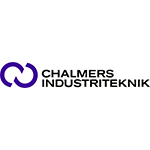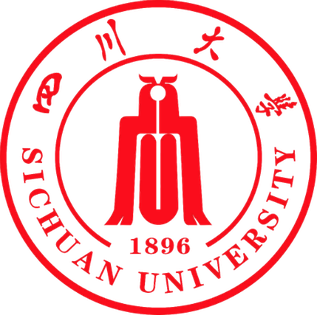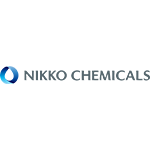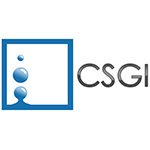
CSGI (Center for Colloid and Surface Science) is an Italian public research organization established in December 1993 under the supervision and control of the Italian Ministry for University and Scientific Research (MIUR). The members of CSGI work in 18 different Units and 7 associated laboratories on closely related scientific fields, concerning both fundamental and applied research. CSGI also aims at the development of high-tech new processes, as a support for the activities of the small and medium size industrial companies. CSGI researchers operate in the following scientific areas: structure and dynamics of amphiphilic supramolecular assemblies (monolayers, micelles, bilayer vesicles, microemulsions, Langmuir-Blodgett films, host-guest systems), nanostructured soft and hard materials, physical chemistry of cement, structural analysis of biomolecules in solution, interaction processes, recognition of ligands with macromolecular surfaces, formulation of nanophasic systems. CSGI has an international reputation in the field of nanotechnology for the conservation of cultural heritage and the optimization of industrial processes using colloid and surface science.
ROLE IN THE PROJECT
CSGI is the project coordinating unit. CSGI is the leader of WP2, which will develop cleaning fluids (e.g. o/w microemulsions), and hydrogels/organogels for the confinement of the cleaning fluids and solvents to allow controlled and safe removal of soil and aged/detrimental layers from the surface of works of art, such as paintings or metals. Moreover, CSGI will contribute to WP3 and WP4, aimed at developing green protective coatings and green consolidants and packing materials. CSGI will be also involved in reporting and in dissemination and training activities (WP7).
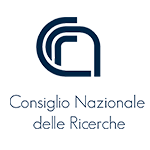
The National Research Council (CNR) of Italy, founded in 1923, is the largest Italian research public organization performing multidisciplinary activities. Its mission is to carry out, promote, spread, transfer and improve research activities in the main sectors of knowledge growth and of its applications for the scientific, technological, economic and social development of the society. The Scientific network of CNR is organized in seven thematic Departments that consist of Research Institutes widely distributed throughout the national territory.
CNR Unit will be represented in the Consortium by two CNR Institutes belonging to the Department of Chemical Science and Materials Technology: CNR-IPCB (Institute for Polymers, Composites and Biomaterials) and CNR-ISMN (Institute for the Study of Nanostructured Materials).
IPCB-CNR is a research institute with the main focus on the fundamental and translational research in the field of polymer-based advanced and sustainable materials. ISMN-CNR is a research Institute devoted to frontier research in nanoscience and nanotechnology. For both IPCB-CNR and ISMN-CNR, a significant part of their research and scientific activities are carried out within EC and national projects, to address a variety of topics, including those concerning the knowledge and the conservation of cultural heritage.
ROLE IN THE PROJECT
The IPCB-CNR group and the ISMN-CNR group will be mainly involved in the development of innovative protective coatings by exploiting the concepts of sustainability (i.e., by using renewable polymers such as polysaccharides, proteins and polymers synthesized from monomers obtained by biorefinery of suitable biomass) and composite (i.e., by using suitable fillers and adducts to modify structural and functional properties of the coatings, including self-healing capability). The design, development and validation of the innovative protective coatings will be performed for different substrates, fulfilling the requirements of the conservators. Moreover, IPCB-CNR will be also involved in the designing and development of sustainable polyurethane based foams for the storage of artworks in suitable archives/box. The selection of sustainable polyols and the utilization of reversible adducts will be investigated to get lightweights materials able to adsorb loading energy and contribute to control the microclimate within the storage box. Finally, IPCB-CNR and ISMN-CNR will be both involved in the development of sustainable substrates to realize LIG sensors for monitoring storage conditions of artworks, by using renewable matrix, suitable fillers as well as graphene and its derivatives.
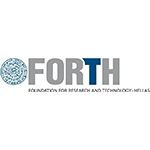
The Foundation for Research and Technology-Hellas (FORTH) is one of the largest research centers in Greece with state-of-the-art equipment, highly qualified personnel, and a reputation as a top-level research foundation worldwide. The research activities of the institute are focused on three major research areas: Nanotechnology/ Advanced Materials, Energy/Environment and Biosciences/ Biotechnology. FORTH is running both basic and applied research projects attracting funding from national, European and international agencies, as well as, directly from the industry. The current output of the FORTH is over 180 papers per year in international journals. Over the recent years, its publications have been receiving annually more than 9000 bibliographic references. Also, the Institute is very active in the exploitation of research results through the filing of patents and establishment of spin-off companies to promote new products and services.
ROLE IN THE PROJECT
FORTH has leading expertise in graphene-related materials and its main role in the project is to provide graphene materials produced through eco-friendly processes which will be utilized in the development of green solutions for the protection, conservation, and restoration of cultural heritage.
Additionally, FORTH will play a significant role in the following activities:
- Fabrication of protective multi-functional coatings with high bio-based content;
- Development of green composites for structural conservation of frames and panels;
- Production of graphene foams with antimicrobial properties for the removal of gaseous pollutants;
- Fabrication of green graphene-based sensing technology with rich bio-based content
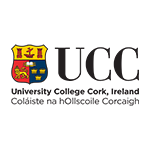
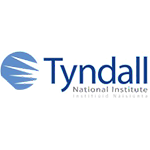
T-UCC is a leading European research centre in integrated ICT hardware and systems and a research flagship of University College Cork. Researchers at T-UCC work with industry and academia to transform research into products in core market areas of communications, agri-tech, energy, environment and health. As the national institute for micro/nanoelectronics and photonics, T-UCC employs over 450 researchers, engineers and support staff, with a cohort of 120 full-time graduate students. T-UCC is home to a high-tech national research infrastructure unique in Ireland and is a national research asset. Hosting the only full CMOS, Micro-Electronic-Mechanical Systems (MEMS) and III-V Wafer Semiconductor fabrication facilities and services in Ireland, T-UCC is capable of creating opportunities and prototyping new products for its target industries.T-UCC is host of the SFI centre of excellence in communication IPIC and involved in three more national centres of excellence (CONNECT, CONFIRM and VISTAMILK).
T-UCC is also a lead partner in European research programmes in electronics and photonics and their integration into smart systems with applications in communications, agri-tech, energy, environment and health. In H2020, T-UCC has delivered value to European research in 97 projects so far (16 as coordinator). UCC is an award-winning institution with a history of independent thinking stretching back over 170 years. UCC is proud to be ranked in the top 2% of universities in the world and is proud to hold a HR Excellence in Research Award and an Athena SWAN Bronze Award.
ROLE IN THE PROJECT
The T-UCC Team comprises Dr Daniela Iacopino (Nanotechnology group) and Dr John Buckley and Brendan O’Flynn (Wireless Sensor Network group). T-UCC is involved in WP4 (T4.2) on the development of sensing solutions to be integrated into packaging systems, with the aim to realizing novel smart packaging solutions for art preservation. In this task T-UCC will work with task leader ZFB and other partners involved into exploiting proposed packaging materials and solutions towards the development of smart sensors. T-UCC is also leader of T5.2 within WP5, dedicated to the realization of green sensors for art monitoring and preservation. Starting from the success of developed temperature and humidity transponder in Apache, in this task T-UCC will work on development of more sustainable sensor designs. As well as novel antenna designs , T-UCC will work on the incorporation of green materials and fabrication processes into the present design, both at antenna and PCB level, with the aim to produce user friendly, low cost and versatile art monitoring solutions.
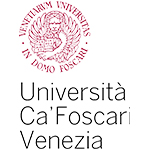
Founded in 1868, Università Ca’ Foscari Venezia is a leading university in Italy in Economics and Management, Humanities, Languages and Literature, Science. Ca’ Foscari University attracts funding from regional, national and international programmes. It has a long-standing tradition in research and well established experience in EU funded projects (282 projects awarded since 2014, of which 187 within the Horizon 2020 Framework Programme. It is a top Host Institution with more than 120 Marie Skłodowska Curie Individual Fellowship awarded, a Cofund Fellowship programme and 18 ERC grantees. The University participation in European and International calls has been enhanced through six Interdisciplinary Research Institutes established within the ‘Research for Global Challenges’ initiative that aims at encouraging international partnerships and fostering the most promising interdisciplinary collaborative research project.
The Department of Environmental Sciences, Informatics and Statistics focuses on the following research areas: biology and ecology, chemistry (environmental, analytical and for the conservation of cultural heritage), environmental engineering, computer science, earth science and statistics. Transversal topics of research include climate and the socio-economic effects of its transformations, complexity, preservation of cultural heritage, monitoring, risk, security (environmental and informatic) and sustainability. Research is developed in collaboration with public bodies and local firms. This synergy as well as the multidisciplinary approach make it possible for the department to find large scale solutions for research.
ROLE IN THE PROJECT
UNIVE is leading WP6 “Life cycle safety and sustainability assessment” as well as task 6.1 and 6.2.
The first main objective of UNIVE is the identification of safer solutions for both human health and the environment, that will take place in the first year of the project through a Chemical safety assessment guiding step-by-step product developers in the early design of sustainable innovative solutions for cultural heritage conservation. To this end, the sustainability framework implementing the Safe by Design (SbD) concept developed in the past H2020 NANORESTART project will be used as starting point.
The second main objective of UNIVE is to perform a screening sustainability assessment according to environmental, economic, technical as well as social/ethical/legal criteria. Results will allow to rank innovative formulations as well as to compare them to relevant conventional products, if any, and therefore decide whether to proceed to pilot industrial upscale. This will be part of the task 6.2 planned for the second year of the GREENART project.
UNIVE will also support GD in the Life Cycle Assessment (LCA) and Life Cycle Costing (LCC) analysis within task 6.3.

GreenDecision (GD) is a spin-off company of University Ca’ Foscari of Venice (UNIVE). Its mission is to transfer to European consortia and the private sector knowledge and experience generated for over a decade of research and development of strategies, modelling tools and software-based systems for sustainability assessment of chemicals and nano(bio)technologies used in consumer products and medicine. The main activities of the company involve developing and testing of modelling and decision support tools in the environmental, health and safety areas, and facilitating their exploitation by stakeholders. This includes software-based Decision Support Systems, platforms and e-infrastructures such as the ones developed in the large-scale EU projects SUN, NanoInformaTIX, SAFE-n-MEDTECH, caLIBRAte, BIORIMA, REFINE and Apache.
GD offers to private and public clients advanced and highly qualified support in the science and technology sectors by providing tailored software solutions able to integrate data and modelling tools for sustainability assessment of technological alternatives, such as Life Cycle Assessment (LCA), Life Cycle Cost (LCC) and Social LCA (S-LCA).
ROLE IN THE PROJECT
GD will lead task 6.3 and task 7.3 of GREENART project. Task 6.3 involves the activities related to Life Cycle Assessment (LCA) and Life Cycle Cost (LCC) to estimate environmental and economic impacts along the life cycle (including the manufacturing stage) of the most promising innovative solutions (among the proposed gels/cleaning fluids, protective coatings, consolidants, foams/packaging materials, and sensors), comparing them to currently existing solutions (where comparable LCA studies are available). LCC will also be assessed through SimaPro by establishing plausible costs and costing methods and defining them in the software.
GD will also lead the activities for the development of a smartphone App that encompasses an informative section where end-users and citizens can find information about selected cultural objects such as artistic techniques, materials, and artists, but also allows citizens to check the “status of conservation” of selected cultural objects and follow the conditions of on-going remedial actions, as well as the applied preventive or conservation measures, the adopted technologies, etc.
GD will also support UNIVE in task 6.1 and task 6.2.
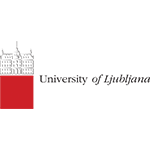
HSLL is based at the Faculty of Chemistry and Chemical Technology of the University of Ljubljana (Slovenia) and consists of a diverse group of researchers addressing interdisciplinary heritage science research questions. In relation to green chemistry and green conservation, the HSLL develops benchmarks, instruments, methods and techniques to measure and monitor processes, materials, objects, collections, buildings or sites, with the aim to improve the sustainability of heritage buildings and collections. The lab also uses advanced tools to assess remedial and preventive conservation treatments and procedures and provides capacity building for conservation professionals. The lab has cutting-edge scientific skills and facilities, but also a highly collaborative approach to research with diverse stakeholders and global institutions. The UL and the Faculty of Chemistry and Chemical Technology provide support for the activities to researchers in EU projects with diverse research initiatives (including E-RIHS.SI, the Slovenian node of the European Research Infrastructure for Heritage Science) that provide specialized technical, instrumental, and expert assistance to research groups.
ROLE IN TEH PROJECT
The HSLL will contribute to the GreenArt project by evaluating the use of green conservation materials and treatments in terms of assessment of their effects on the environment (e.g. emissions, sorption properties), their effects on collection materials (incl. conservation assessment) and lifecycle modelling related to storage materials (e.g. enclosures, such as boxes). Our contribution is relates to degradation modelling, preventive conservation, organic material analysis and characterization, environmental analysis, environmental impact, and conservation risk assessment. The core HSLL team involved in the GreenArt project consists of prof. Matija Strlic, prof. Abdelrazek Elnaggar and prof. Irena Kralj Cigić.
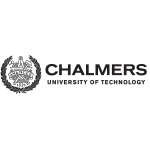
Chalmers tekniska hoegskola (Chalmers University of Technology) was founded in 1829 following a donation by William Chalmers, director of the Swedish East India Company, and was transformed into an independent foundation in 1994. With some 3000 employees, Chalmers has developed leading research in the areas of life sciences, materials science, information technology, micro-and nanotechnology, environmental sciences and energy.
Chalmers’ 13 departments offers PhD and Licentiate programmes as well as MScEng, MArch, BEng and nautical programmes. In the Division of Applied Surface Chemistry at Chalmers there is a long tradition of research in three main areas of relevance to the Apache proposal, which are the siliceous porous materials, in close collaboration with AkzoNobel, the cellulose-based materials and the development of surface active species for surface modification (e.g. surfactant).
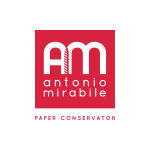
Antonio Mirabile began his career in 1988, he is a paper conservator and a consultant in preventive conservation. He studied conservation in Florence and in Paris, where he actually lives. In France he is accredited by French Ministry of Culture to conserve and restore the cultural heritage belonging to the Musées de France.
He works regularly for public and private collections mainly those consisting of modern and contemporary art on paper and architecture drawings. As UNESCO expert he worked in various paper conservation projects in Yemen, Egypt, Mongolia, DPRK, Uzbekistan and Mauritania. Today he shares his professional activities between preventive conservation assignments, paper conservation treatments and scientific research in particular as partner of EU funded project NANORESTART, APACHE and GREENART he is involved in the development of innovative methods in order to improve conservation treatments and in the organization of the dissemination activities.
Beside he teaches, via short trainings and master classes, paper conservation and preventive conservation in various Universities. He is the author and co-author of about 80 articles and wrote two handbooks published by UNESCO. He is an active member of INCCA and ICOM.
ROLE IN THE PROJECT
Antonio Mirabile will contribute to the project mostly in the dissemination activities, in the validation process of green cleaning fluids and green consolidants and in the assessment of the consistency of the developed material with Conservator’s ethical guidelines, he will play a significant role in the following activities:
– Preparation and optimisation of mock-ups that fits to real artworks;
– Assess consistency of the novel methods with the professional conservation ethical guidelines with its historical, artistic, material, significance and temporal scale considerations;
– Organisation of seminars, lectures and trainings in collaboration with discipline specific networks;
– Development of best practices and protocols during the knowledge transfer of the novel materials to the world of conservators.
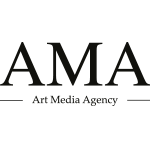
Art Media Agency (AMA)
Founded in 2010, Art Media Agency is a content production agency dedicated to the field of art. It produces articles for third-party medias, art market players, brands, public and private institutions. Articles include: news, reports, analytics, interviews, portraits, wide angles, thematic pieces, editorials, etc. AMA writes in English, French, Spanish, Dutch, German, Italian, Chinese.
Art Media Agency also publishes one of the most distributed professional publication on the field of art (with 240,000+ active subscribers).
ROLE IN THE PROJECT
AMA will produce content about the Greenart project, its context, researches and findings. Articles are aimed for non-specialists with the goal of introducing the project to a wider audience of art professionals or enthusiasts. Content will be included in future AMA’s publication releases.
Subscribe to AMA’s publication for free: subscribe.artmediaagency.com

ZFB, based in Leipzig, Germany, combines many important aspects of active and preventive conservation of cultural heritage in one single company with about 80 employees. Since 1997, it offers several services to cultural or public institutions, such as active restoration and related consulting, dry cleaning, freeze drying on an industrial scale, disaster management, etc. Further, as one of the preventive methods, the in-house developed ZFB:2 mass deacidification saves hundreds of tons of paper per year from acidic decay. With its own R&D and design departments, the measures applied by the company itself are constantly revised and can be adjusted as necessary. In addition, ZFB’s researchers are involved in numerous projects in the broad field of cultural heritage conservation. Since 2015, high-quality protective packaging solutions for cultural assets of various sizes and types are also offered: The DIN ISO 16245 compliant storage boxes can be manufactured in numerous standard dimensions or completely customized – they safely store small coins, paper-based objects, large textiles, dermoplastics, mammal hides, paintings, modern works of art, etc.
ROLE IN THE PROJECT
As a company dedicated to active & passive conservation of paper-based objects and beyond, ZFB will contribute its expertise in archive packaging for the long-term storage of cultural assets. Of particular interest is the transition from packaging material based on virgin wood fibre paper to material based on annual plants like hemp, bamboo, flax, silphia, etc. or agricultural residues (e.g. bagasse). At the same time, high conservation demands shall be maintained. Along with a more sustainable production & distribution process, this should reduce CO2 impact and water consumption, hence maximizing the environmental friendliness of archiving. Further, an assessment of polyethylene and polypropylene, either recycled or derived from CO2 capture and utilization, will be carried out in order to introduce this durable, emission-free and green material for packaging purposes. ZFB will also test the integration and functionality of novel green VOC absorbers and sensors into its archive enclosures.
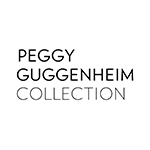
The Peggy Guggenheim Collection is one of the most important museums of European and American art of the twentieth century in Italy. It is located in Peggy Guggenheim’s former home, Palazzo Venier dei Leoni, on the Grand Canal in Venice. At the core of the museum’s holdings is Peggy Guggenheim’s personal collection of 20th-century art comprised of masterpieces ranging in style from Cubism and Surrealism to Abstract Expressionism. The museum presents also temporary exhibitions.
The Peggy Guggenheim Collection is part of the Solomon R. Guggenheim Foundation, whose constellation includes the Solomon R. Guggenheim Museum, New York, the Guggenheim Museum Bilbao, and the future Guggenheim Abu Dhabi. The Foundation collects, preserves, and interprets modern and contemporary art, and explores ideas across cultures through dynamic curatorial and educational initiatives and collaborations.
ROLE IN THE PROJECT
The Peggy Guggenheim Collection holds a unique collection of modern art, displayed and stored in a particular environment, the Venice Lagoon, that poses challenges for preventive conservation.
In Greenart the PGC will be involved in the following tasks:
- assessment of green cleaning fluids and green gels
- assessment of green consolidants and packaging materials
- assessment and validation of protective coatings
- validation and testing of sensors in simulated and real environments
The solutions will be evaluated in terms of protective efficacy against degrading factors; passive and active performance; long-term durability; aesthetic properties; ease of application/removal, including health and safety aspects.

The Ministry of Culture is the authority responsible for all Italian Cultural Heritage. There are different departments with varying responsibilities and with branches in all Italian Regions. The Department involved in the GREENART Project is the Superintendency for archaeological fine arts and landscapes for the provinces of Chieti and Pescara, in the Abruzzo Region. SABAP CH PE is responsible for the conservation and restoration of all historical-archaeological contexts, monuments and artefacts. The SABAP CH PE has great experience in archaeological excavation, in the maintenance of historical buildings and monuments, in the identification of the requirements for the best protection of archaeological-historical areas, buildings and monuments, in the organisation of exhibitions and in managing restoration and conservation projects. The protection of important archaeological-historical sites, monuments, buildings and artefacts is carried out by experienced conservators and other specialists, working in collaboration with the local population and authorities. SABAP CH PE has also collaborated with national and international research Institutes, studying new materials and methods for the conservation of Cultural Heritage.
ROLE IN THE PROJECT
The Ministry of Culture, with the Superintendency for archaeological fine arts and landscapes for the provinces of Chieti and Pescara, has as one of its institutional tasks the obligation to conserve cultural heritage.
Having a large number of artworks at its disposal, it has selected significant and particularly complex objects for the project.
In GREENART, MiC – SABAP CH PE will be involved in several WPs, in particular:
- Assessment of green cleaning fluids and green gels;
- Assessment and validation of protective coatings;
- Assessment of green consolidant and packaging materials;
- Screening sustainability assessment and life cycle assessment;
- Dissemination activities
Solutions will be evaluated in terms of effectiveness, passive and active performance, long-term durability, aesthetic properties, ease of application/removal, including health and safety aspects.

SPECIFIC POLYMERS is a SME with 30 employees acting as R&D service provider and scale up producer in the field of functional monomers, polymers and materials with high specificity. The company was created to meet the need of R&D departments of international industrial groups in terms of specifically designed monomers, polymers and materials. The main goal of the innovative products developed by SPECIFIC POLYMERS is, in close collaboration with the customers, to validate proof of concepts. For more than 19 years, SPECIFIC POLYMERS has been developping the synthesis of more than 10 000 functional building blocks, monomers and polymers and is now working with more than 500 customers and partners in more than 50 countries worldwide. Innovative products developed by SPECIFIC POLYMERS are used for a very wide range of applications such as functional surface coatings (glass, metal, metal oxides, nanoparticles, plastics), construction industry, aeronautic, automotive (paint, tires, sealant, gaskets), pharmaceutical industry, cosmetics, optoelectronic, optic, water treatment, metal extraction, energy (fuel cells, solar cells or lithium batteries).
ROLE IN THE PROJECT
SPECIFIC POLYMERS will be in charge of synthetizing innovative bio-based molecules for the green gel used for the confinement of cleaning fluid and also for the sustainable protective coating. Besides, the company will work on the synthesis of innovative polymers for the packaging material.
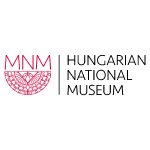
HNM as a central historical museum is collecting all types of objects connected to the history of Hungary from Neolithic Age to present days. Most objects of the 3.8 million are in storage inside of the museum building and outside depos and only approx. 12.000 objects are on display. The HNM has a significant archaeological collection, musical instruments, photographs, posters, coins and medals, arms and armor, goldsmith objects and modern materials like polymers and archives, etc.
Principal activities of the Conservation Department of the HNM:
- Preventive conservation and remedial/active restoration
- Maintenance and innovation of storage and exhibition devices/methods
- Special packaging for storage and loan
- Dissemination of knowledge in academic education and training courses
ROLE IN THE PROJECT
- We are trying to bring green methods into our conservation practice: e.g. recycling of used materials, application of gels
- During the GREENART project, we provide relevant art works and mock-ups for testing the different materials, tools, systems and solutions developed in the project
- We do active remedial conservation with the new materials on-site, monitor and evaluate the results
- We give continuous feedback for the developed materials according to our on-site experience
- We would like to contribute in the working packages WP2, WP3, WP4, WP5 by providing selected objects for testing green cleaning systems, green protective coatings, green consolidants and packaging materials
- The HNM will test and evaluate the effectiveness and applicability of the new, green monitoring technologies provided by the partners, on the formerly selected case study objects in display cases and storage. The HNM will provide constant feedback to the partners.
- Contribution in the dissemination, exploitation and communication on the basis of our experience in academic education, organization of accredited trainings, seminars, workshops and active social relations – WP7
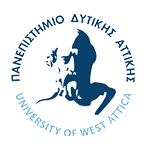
The University of West Attica (UNIWA) was founded in March 2018 as a result of the merging of the Technological Educational Institute of Athens, the Piraeus University of Applied Sciences and the National School of Public Health. UNIWA is one of the largest universities in Greece regarding the number of undergraduate students. It consists of 27 departments operating under the academic umbrella of six schools, in the fields of administrative and economic sciences, engineering sciences, health and welfare sciences, food sciences as well as applied art and culture studies.
UNIWA takes part in the project with three research laboratories:
- The laboratory of Conservation–Promotion of Visual Arts, Books and Archival Material (ARTICON Lab) whose main goal is the application, improvement and sharing of advanced technologies -in particular nondestructive testing and chemical microanalysis- in the diagnosis, documentation, conservation and restoration of cultural heritage objects.
- The laboratory of Soft Energy Applications and Environmental Protection (SEA lab) with a long experience in technologies covering the broad areas of renewable energy sources and the protection of the environment.
- The laboratory of Optimization of Production Systems (OPS lab) which conducts research on the field of the development and the implementation of optimisation methods in a wide area of problems faced by engineers.
ROLE IN THE PROJECT
UNIWA Team is involved in all seven packages, with particular focus on the assessment and validation of the new materials of green cleaning fluids and gels, green protective coatings, as well as green consolidants and packaging. The tasks will be carried out using modern nondestructive testing such as hyperspectral imaging techniques, applied on mock-ups and original artworks of panel and canvas painting, books and archival material, textile, stone and metals. Furthermore, tests will be carried out to study the materials’ behaviour and properties regarding workability and performance, chemical resistance, mechanical compatibility and optical assessment. The methods to be used will be colorimentry, thickness and hardness measurements, grammage, barrier properties etc. UNIWA TEAM also participates in the validation and testing of sensors in simulated and real environments in the conduction of analysis regarding LCA/LCC Key aspects, concepts, system definition, appropriate software selection and identification of key environmental indexes. All UNIWA members will contribute to the relative reports and will participate in the dissemination and exploitation of the results.
beWarrant (BEWH) is a branch of the Italian company Tinexta Innovation Hub, a privately held consultancy services company that provides full-spectrum consulting in business finance. Warrant Hub has been active since 1995, growing over the years to become a leader in its sector today. Tinexta Innovation Hub Business Units work in synergy with its Innovation Lab to give their clients the best support tools for the success of their business initiatives and to assist them in the preparation and management of strategic projects: business projects, research projects, training and technology transfer activities, under National and International support frameworks.
The European Funding Division (EFD) team provides consultancy, training and support on European Funding opportunities, and in the preparation, negotiation and management of European Proposals, particularly on H2020 calls. EFD offers also support for communication and dissemination activities, and periodically participates into and organizes sectional seminars and networking events with/for industrial associations, SMEs, policy makers, etc. thus having the opportunity to disseminate the project results to relevant audiences.
ROLE IN THE PROJECT
beWarrant – Tinexta Innovation Hub is leader of task 7.1 “Dissemination and Expoitation, including communication activities ” and task 1.2 “Risk, innovation and IPR management”. BeWarrant will define the project graphic identity, develop the project Exploitation, Disseminaiton and Communication Strategy and it will develop and update the main project communication tools. Moreover, it will define a catalogue of innovation containing a technological risk map with definition of risk levels and likelihood.
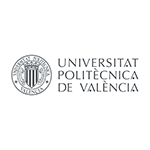
The Universitat Politècnica de València (UPV) is a Spanish public university. It is main campus is located in Valencia, Spain, with two other campus in Alcoy and Gandía. The staff of the UPV consists of circa 4,500 people, including lecturers, researchers and administration workers. According to several international rankings, the UPV is the best technical university in Spain. Certainly, the UPV is a very active institution, participating in many national and international projects and producing a number of patents and high-impact publications, mostly, but not only, in the technological fields.
The UPV is organised in schools, teaching departments and research institutes. The Instituto Universitario de Restauración del Patrimonio (University Institute for the Conservation of Cultural Heritage, or IRP) consists of circa 70 researchers from different fields working in cultural heritage conservation. The four UPV researchers participating in the GREENART project are members of the IRP.
ROLE IN THE PROEJCT
The role of the UPV in the project consists in designing:
- A system for reducing the consumption of paper auxiliary materials in paper workshops; this research will be based on the “pleural system”, a drying, lining and flattening system developed by the UPV.
- A low-cost, hi-efficiency exhibition system for paper-based artifacts that prevents the distortions caused by small RH fluctuations, thus reducing the need for energy-consuming HR and temperature control. The target is developing a system that can keep both small- and large-sized paper artifacts stable under RH oscillations of up to ±20% RH.
Overall, these techniques will be more feasible, safe, affordable, user-friendly and energy-saving as opposed to traditional practices.

Nouryon is a global specialty chemicals leader and supplies industries worldwide with essential chemicals for the manufacture of products such as paper, plastics, building materials, food, pharmaceuticals, as well as cleaning and personal care items.
Nouryon’s Levasil branch is a world-leading manufacturer of colloidal silica with a history of and focus on sustainable innovation. The colloidal silica goes into applications like catalysts, coatings, construction, electronics and packaging.
Nouryon’s surfactants include a range of proven brands and are used for functions such as detergency, wetting, emulsification, foam stabilization or defoaming, viscosifying and solubilization. Our efforts help contribute to the United Nations Sustainable Development Goals (UN SDGs), and we make a positive impact on these through our ‘Commitment to a Sustainable Future’, which is based on three clear commitments to:
- CONTINUOUSLY IMPROVE our safety and environmental performance;
- GROW AND INNOVATE to create sustainable solutions, enabling customers to be more sustainable;
- ENGAGE AND PARTNER with employees, customers, suppliers, and society to drive sustainable progress.
These goals were developed following a materiality assessment and aims to support the objectives of the UN Paris Agreement on climate change and the UN Sustainable Development Goals.
ROLE IN THE PROJECT
Nouryon will firstly support the project with product samples, but can also contribute in the assessment of industrial transfer potential.
Moreover, Nouryon has expertise in colloidal silica, surfactants and cellulosic materials and the use of these in a wide range of applications.
More specifically:
- The use of colloidal silica and cellulose-derived products in composite materials and for consolidation
- Biosurfactants and their use in formulation
At the Bohus site, Sweden, all the necessary equipment for synthesis, up-scaling, production and characterization of silica nanoparticles and porous silica particles are available.
In Stenungsund, Sweden, Nouryon has commercial production and all the necessary equipment for synthesis and up-scaling of surfactants including the safe handling of raw materials.
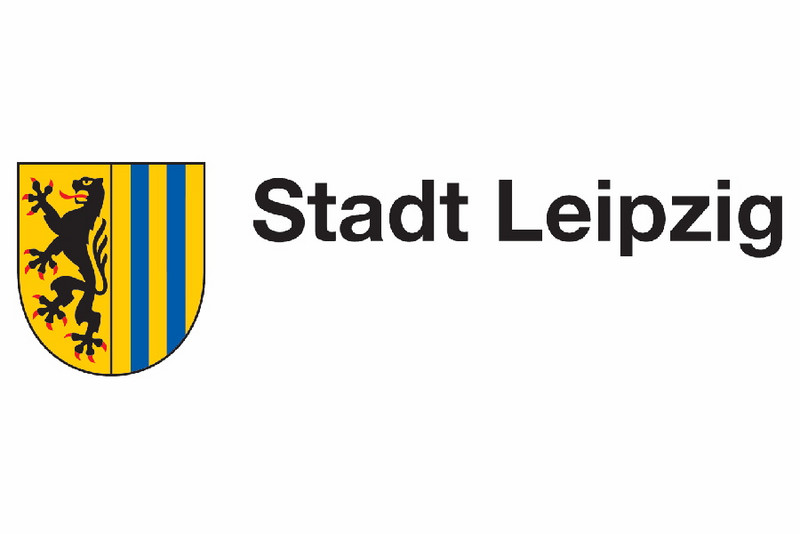
The Natural History Museum Leipzig is a municipal museum in Leipzig with geological-paleontological, botanical, zoological and archaeological collections. With the world’s largest collection of animal preparations and sculptures by taxidermist Herman H. ter Meer, the Natural History Museum is of special importance. Thelarge collection of about 1 Mio objects also contains numerous samples from the first German Deep Sea Expedition Valdivia, and animal preparations from Eduard Friedrich Poeppig and Simon Peter Pallas. Many more special collection like from insects, fossils, mammals, birds and molluscs are of international importance.
ROLE IN THE PROJECT
While the museum will move in to a new building and create a new exhibition, the comprehensive collection will also get a new storage building. Therefor a new way of proper packaging will have to be developed and tested.
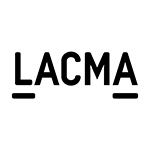
The Los Angeles County Museum of Art (LACMA) has its roots in the Los Angeles Museum of History, Science, and Art, established in 1910 in Exposition Park. In 1961, LACMA became a separate, art-focused institution and opened its new location to the public in 1965.
Located on the Pacific Rim, LACMA is the largest art museum in the western United States, with a collection of nearly 149,000 objects that illuminate 6,000 years of artistic expression across the globe. Committed to showcasing a multitude of art histories, LACMA exhibits and interprets works of art from new and unexpected points of view that are informed by the region’s rich cultural heritage and diverse population. LACMA’s spirit of experimentation is reflected in its work with artists, technologists, and thought leaders as well as in its regional, national, and global partnerships to share collections and programs, create pioneering initiatives, and engage new audiences.
LACMA’s mission is to serve the public through the collection, conservation, exhibition, and interpretation of significant works of art from a broad range of cultures and historical periods, and through the translation of these collections into meaningful educational, aesthetic, intellectual, and cultural experiences for the widest array of audiences.
ROLE IN THE PROJECT
LACMA’s team will be involved in the GREENART project as an associate partner. The conservation department at LACMA includes objects, textiles, paper, paintings, imaging and conservation research specialties, each of which will be actively involved in the project. LACMA will focus on the assessment tasks for the WP2 Green cleaning systems, WP3 Green protective coatings and WP4 Green consolidant and green packaging materials. The team will draw upon the museum’s large and varied collection to provide case study objects, as well as its long-running experience with hands-on conservation treatment and conservation research.
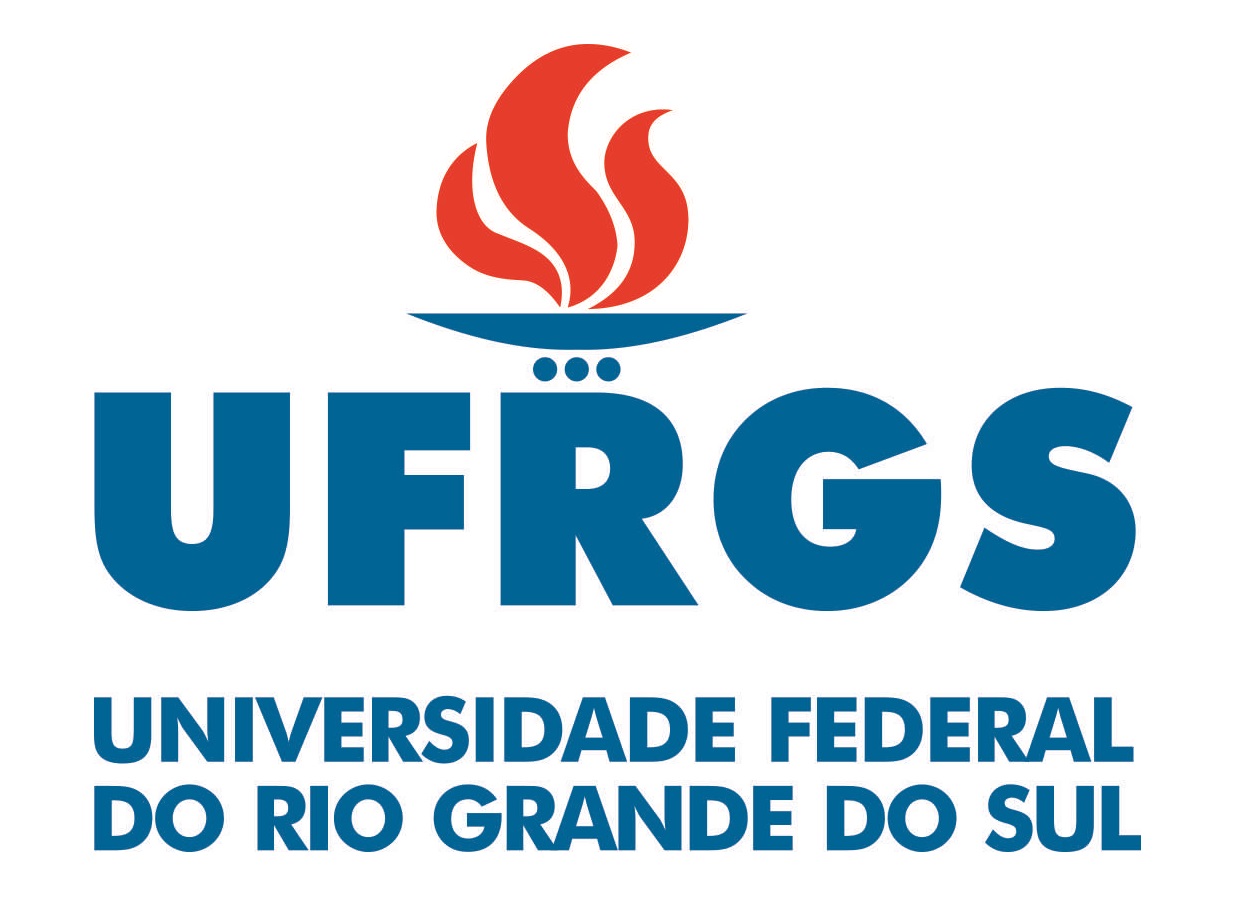
The Institute of Chemistry at Universidade Federal do Rio Grande do Sul consists of three departments: Department of Inorganic Chemistry, Department of Physical Chemistry and Department of Organic Chemistry. This institution provides challenging undergraduate and graduate courses, as well as a broad range of chemistry related research programs. Nowadays, it is considered one of the most important research and training centers for human resources in chemistry in Brazil and Latin America, with its Industrial Chemistry and Bachelor of Chemistry courses accredited by the Royal Society of Chemistry. On a yearly basis, around 50 new chemists graduate at the Institute of Chemistry. For the development of research projects, the Institute of Chemistry has the physical, technological and instrumental infrastructure for the preparation of ionic liquids and materials, and the characterization of these materials. Equipment’s are accessible at its Analytical Centre, the Multi-user Laboratory of Thermal Analyses, the Centre of Microscopy and Microanalysis and the Centre of Nanoscience and Nanotechnology.
ROLE IN THE PROJECT
The Laboratory of Technological Processes and Catalysis of the Institute of Chemistry acquired expertise in several research fields that suit the objectives of the GREENART proposal. One of these fields is ionic liquids, and their preparation is well established within our group, which will provide a solid basis for exploring novel applications together with the partner institutions. Within this context, task-specific ionic liquids will be synthesized for the development of green cleaning fluids, green gels for the confinement of cleaning fluids, sustainable protective polymer coatings, and green packaging materials.
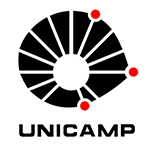
University of Campinas (UNICAMP)is located in Campinas, State of São Paulo – Brazil. Founded in 1966, it is a top-ranked university in South America and is responsible for 8% of the academic research in Brazil. Unicamp has ca. 34,000 students enrolled in 66 undergraduate courses and 153 Master’s and Doctoral programs. It is composed of 24 Faculties and Institutes, 2 Hospitals, and 23 Nuclei and Research Centers.
One of these institutes is the Institute of Chemistry, which has 75 faculty members and 1,100 students. It comprises more than 40 research areas in Chemistry and has been evaluated for years as a graduate program of excellence in the field of Chemistry by Capes (Coordination for the Improvement of Higher Education Personal – Brazil).
The Laboratory of Chemistry and Morphology of the Biomass (LaQuiMoBio) was created at the Institute of Chemistry in 2012. Since then, it has been hosting works on cellulose and lignin isolation from plants and agricultural wastes to produce cellulose fibers, nanocrystals, nanofibrils, bulk lignin, and nanolignin. Additionally, studies on the application of these components in polymer nanocomposites, coatings, aerogels, hydrogels, foams, and cosmetics are also extensively carried out in LaQuiMoBio (http://camila.iqm.unicamp.br).
ROLE IN THE PROJECT
Production of nanocelluloses (cellulose nanocrystals-CNC and nanofibrils-CNF) and lignin nanoparticles (LNP) from renewable plant sources (e.g., grasses or agricultural residues, such as sugarcane bagasse), with modulated physicochemical properties, morphologies, and surface chemistry.
These particles, functionalized or not, should be used in contributions to:
WP2: Green Cleaning Systems – Task 2.2: Green gels for the confinement of cleaning fluids
Specific role of UNICAMP: production of CNC and CNF from sugarcane bagasse to be incorporated into PVA and PVP cleaning gels to improve their green character.
WP3: Green Protective Coatings – Task 3.2: Sustainable protective polymer coatings from renewable polymers
Specific role of UNICAMP: production of CNC, CNF, and LNP to impart barrier and UV –shielding properties to sustainable coatings. Nanocelluloses and nanolignins are both hydrophilic and dispersible in water, thus avoiding the use of toxic organic solvents in applications.
WP4: Green Consolidants and Packaging Materials – Task 4.1: Green consolidants for the strengthening of works of art
Specific role of UNICAMP: provide nanocelluloses to CSGI, who will incorporate them into silk-regenerated silk fibroin (SRSF) composites to prepare green consolidants able to impart readhesion of powdering painting layers or recover mechanical properties of fragile textiles.
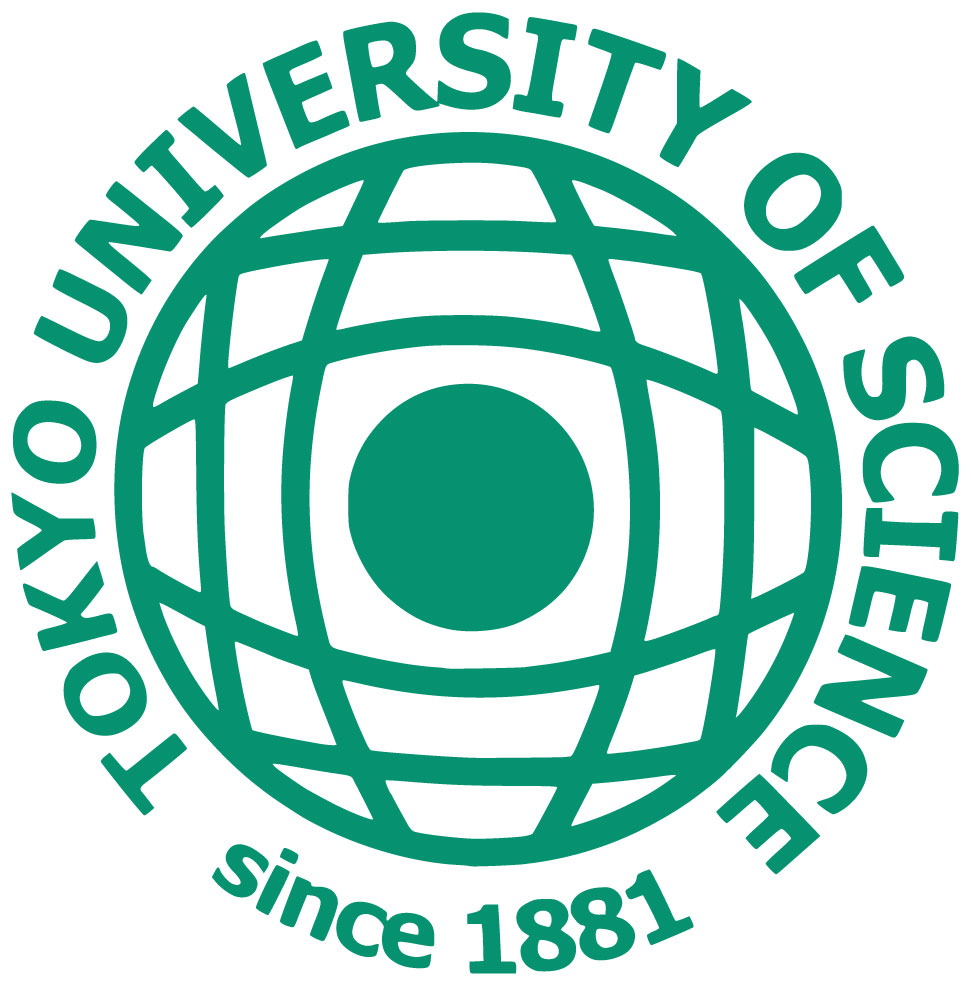
Tokyo University of Science (TUS) founded in 1881, is one of the oldest private universities of science and technology in Japan. Rooted in a strong sense of ethics, scientists and engineers at TUS strive to solve global challenges and make the world a better place through science.
Our laboratory, Itagaki-Shitanda Laboratory, specializes in electroanalytical chemistry. We aims to establish an electrochemical analysis method using the electrochemical impedance method and conducting research on printable sensors.
ROLE IN THE PROJECT
Tokyo University of Science (TUS) will explore new methods for the electrochemical characterisation of the artefacts’ surface before and after cleaning interventions (as related to soil capture), e.g. three-electrode systems whose polarization curves can be measured by simply attaching a sticker device to the substance to be measured, such as a corrosion measurement object, allowing in situ electrochemical measurements without the need for processing the measured objects.
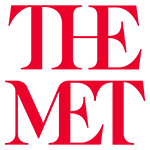
The Metropolitan Museum of Art, founded on April 13th, 1870, in New York City, is located in two iconic sites—The Met Fifth Avenue and The Met Cloisters.
The museum’s comprehensive collection of art encompasses more than two million works of art spanning over 5000 years from around the world. Its mission is to collect, study, conserve, and present significant works of art across all times and cultures in order to connect people to creativity, knowledge, and ideas.
The Met has always aspired to be more than a treasury of rare and beautiful objects. Every day, art comes alive in the Museum’s galleries and through its exhibitions and events, revealing new ideas and unexpected connections across time and across cultures.
The Met’s collection is divided among seventeen curatorial departments and five conservation departments, including Object Conservation, Textile Conservation, Paper Conservation, Photograph Conservation, Painting Conservation, as well as conservators embedded within various curatorial departments such as Michael C. Rockefeller Wing, Arms and Armors, The Costume Institute and Watson Library. The Department of Scientific Research collaborates with conservators and curators in investigating the material aspects of works of art in The Met’s collection.
ROLE IN THE PROJECT
The Met’s Departments of Textile Conservation, Object Conservation, and Scientific Research are engaged in the GreenArt project as Associated partners. The team is especially committed to participate in the action tasks related to WP2: Green cleaning systems as well as WP4: Green Consolidants.
Following a condition assessment of selected case studies among historic textiles, medieval sculptures, and Egyptian art from The Met’s collection, conservators will address the application of green cleaning system and consolidants responding to conservation issues, taking under the consideration the materials of which each artwork is composed.
Prior to the testing and application of GreenArt new formulas provided by the WP task partners, the analytical investigation by The Met’s scientists will clarify the nature of degradation in the object.
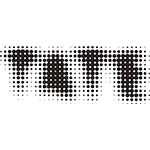
Founded in 1897, Tate is a world-leading visual arts organisation welcoming millions of visitors annually. Our vision is to serve as artistically adventurous and culturally inclusive art museums for the UK and the world. We deliver this through activities in four galleries across the UK (Tate Britain, Tate Modern, Tate Liverpool and Tate St Ives), our digital platforms and collaborations with national and international partners. Our collection includes British art from the 16th century to the present day, and international modern art from 1900 to the present day. Tate is a leading centre for research in art history, collection care, conservation, heritage science, curatorial practice, museology and creative learning. Research at Tate generates insights and outcomes of value to the cultural and academic sectors in the UK and internationally. Collection Care’s mission is to manage, preserve and enable access to Tate’s collections in both physical and digital format. The Division (approximately 160 colleagues) carries out Tate’s legal responsibilities for the care of its collections, for the benefit of the public, now and in the future. Its operations embrace the management and care of art, archive and library collections and the facilitation of Tate’s programmes of acquisitions, exhibitions, loans and international touring.
ROLE IN THE PROJECT
Tate’s primary involvement will be in Work Package 2. Tate will lead Task 2.3 Assessment of green cleaning fluids and green gels which will see partners (conservators/SMEs, curators, museums/institutions) assess the green solutions of GREENART and provide a practical evaluation of the feasibility, safety, time- and cost-effectiveness of the new solutions as applied to the conservation of works of art, on representative mock-ups and real artefacts.
At Tate the final products will be used for the conservation of significant modern masterpieces. Tate’s contribution will focus on using and rigorously evaluating these new green materials, primarily for removal of soiling from unvarnished painted surfaces within a framework of comparative studies and professional ethics.
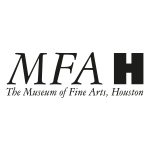
The Museum of Fine Arts, Houston, is the 12th largest art museum in the world based on square feet of gallery space. The permanent collection of the museum spans more than 6,000 years of history with approximately 70,000 works from six continents. The Museum of Fine Arts, Houston, serves as a welcoming and inclusive place for all people, connecting the communities of Houston with diverse histories of art. Through our permanent collections, special exhibitions, learning and interpretation programs, studio instruction, publications, conservation, and scholarly research, we strive to inspire appreciation and understanding of the broadest spectrum of human achievement.
ROLE IN THE PROJECT
MFAH will be involved in:
- WP1 – Scientific and Financial Management;
- WP2 – Green Cleaning System, Task 2.3 – Assessment of green cleaning fluids and green gels;
- WP3 – Green Protective Coatings, Task 3.3 Assessment and validation of protective coatings;
- WP4 – Green Consolidants and Packaging materials, Task 4.3 Assessment of green consolidants and packaging materials;
- WP7 – Dissemination, exploitation and communication, Tasks 7.1 Dissemination and exploitation including communication activities and 7.2 Trainings.

Shiseido Company, Limited is a Japanese multinational cosmetic company founded in Tokyo, Japan in 1872. Its product categories consist of: skin care, make up, body care, hair care, and fragrances. The company is one of the oldest cosmetic companies in the world. It is the largest cosmetic firm in Japan and the fifth largest cosmetic company in the world..
ROLE IN THE PROJECT
In the Greenart project, Shiseido will be involved in the formulation of green materials, and in the exploitation and industrialization activities of the newly developed solutions/tools, and their transfer to transversal industrial sectors also beyond Cultural Heritage conservation (i.e. cosmetics and detergency fields).

